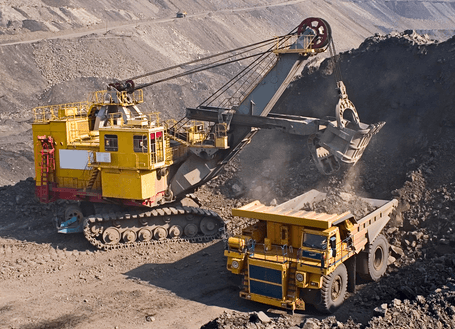Ghana and three other countries account for half of tropical deforestation linked to mining – Research
 There is research showing that more than half of all tropical deforestation can directly be attributable to industrial mining in Indonesia, Brazil, Suriname and Ghana.
There is research showing that more than half of all tropical deforestation can directly be attributable to industrial mining in Indonesia, Brazil, Suriname and Ghana.
The new peer-reviewed research published this week in the Proceedings of the National Academy of Sciences (PNAS), shows that, out of 26 countries, Indonesia accounted for 58.2 per cent of the tropical deforestation directly caused by industrial mining activities.
Brazil, Ghana and Suriname also stood out in the study, which underscored the need for stronger measures to protect tropical forests from destructive economic activities like mining.
A press statement copied to Ghana Business News said the research is the first-ever Biome-wide Assessment of the mining industry’s impact on tropical forests and the first to quantify the global impact of industrial mining on tropical forest loss.
The researchers overlapped the geographic coordinates of industrial mines in operation from 2000-2019 with forest loss data from the Global Forest Change dataset for the same period.
The researchers from the Vienna University of Economics and Business and Clark University used data covering 26 countries representing 76.7 per cent of the total tropical deforestation observed from 2000-2019.
It said, “coal extraction in the Indonesian province of East Kalimantan drove the mining-related deforestation in the country. The deforestation from iron ore and gold mining in the Brazilian state of Minas Gerais was clearly visible in the satellite data, while bauxite and gold mining were predominant in Ghana and Suriname,” the statement added.
According to the statement, for Indonesia, Brazil and Ghana, tropical deforestation from industrial mining peaked from 2010-2014 but continues today.
Adding that coal mining in Indonesia in particular doubled in this time period as output grew to match increased demand from China and India.
“The scope of forest destruction in the country stood out in the study, especially in East Kalimantan which lost 19 per cent of its tree cover in the past two decades.”
It noted that industrial mining also had widespread indirect impacts on deforestation. More than two-thirds of the countries studied had, within 50 kilometers of the areas designated for mines, higher rates of deforestation that were not connected to other factors.
The statement quoted Anthony Bebbington, Ph.D., Higgins Professor of Environment and Society at Clark University’s Graduate School of Geography and corresponding author for the study, as saying: “Against the rapidly growing demands for minerals, in particular for metals for renewable energy and e-mobility technologies, government and industry policies must take into account both the direct and indirect impacts of extraction.”
“Addressing these impacts is an important tool for conserving tropical forests and protecting the livelihoods of communities who live in these forests.”
The study points to the need for Environmental Impact Statements and other permitting requirements for industrial mining to include a broader geographic scope that includes more territory outside of the project concession area.
The statement added that applications for new mining projects should also not be examined in isolation and the cumulative impacts of other projects, such as agricultural developments, need to be considered.
“There is a broad range of environmental damage caused by mining operations on top of deforestation, including destruction of ecosystems, loss of biodiversity, disruption of water sources, the production of hazardous waste and pollution,” Stefan Giljum, lead author of the study and associate professor at the Institute for Ecological Economics, Vienna University of Economics and Business, is quoted as saying.
The statement said government permits should take all of this into account since an industrial mine can easily disrupt both landscapes and ecosystems.
Hariadi Kartodihardjo, PhD, Professor of Forest Policy at Bogor Agricultural University, added that “although Indonesia’s total deforestation has declined annually since 2015, these findings emphasize the continued need for strong land use planning to ensure mining does not destroy forests or violate community rights.”
The statement said previous research in the Brazilian Amazon has shown that acknowledging and enforcing the collective property rights of indigenous peoples and local communities is one of the most effective ways to , as deforestation in their territories is significantly lower than in places managed by other government or private entities.
The most recent United Nations Climate Report supports this by adding that supporting indigenous self-determination, recognizing indigenous peoples’ rights and supporting indigenous knowledge-based adaptation are critical to reducing climate change risks and effective adaptation.
The study did not include direct deforestation from artisanal and small-scale mining, as standardized global databases with geographic coordinates for such operations do not yet exist in forms that are amenable to statistical analysis, the statement noted.
But added that the authors recognize that artisanal and small-scale mining, as well as illicit mining, generate significant environmental damage that demands scrutiny, response and remediation.
By Eunice Menka
Copyright ©2022 by NewsBridge Africa
All rights reserved. This article or any portion thereof may not be reproduced or used in any manner whatsoever without the express written permission of the publisher except for the use of brief quotations in reviews.
